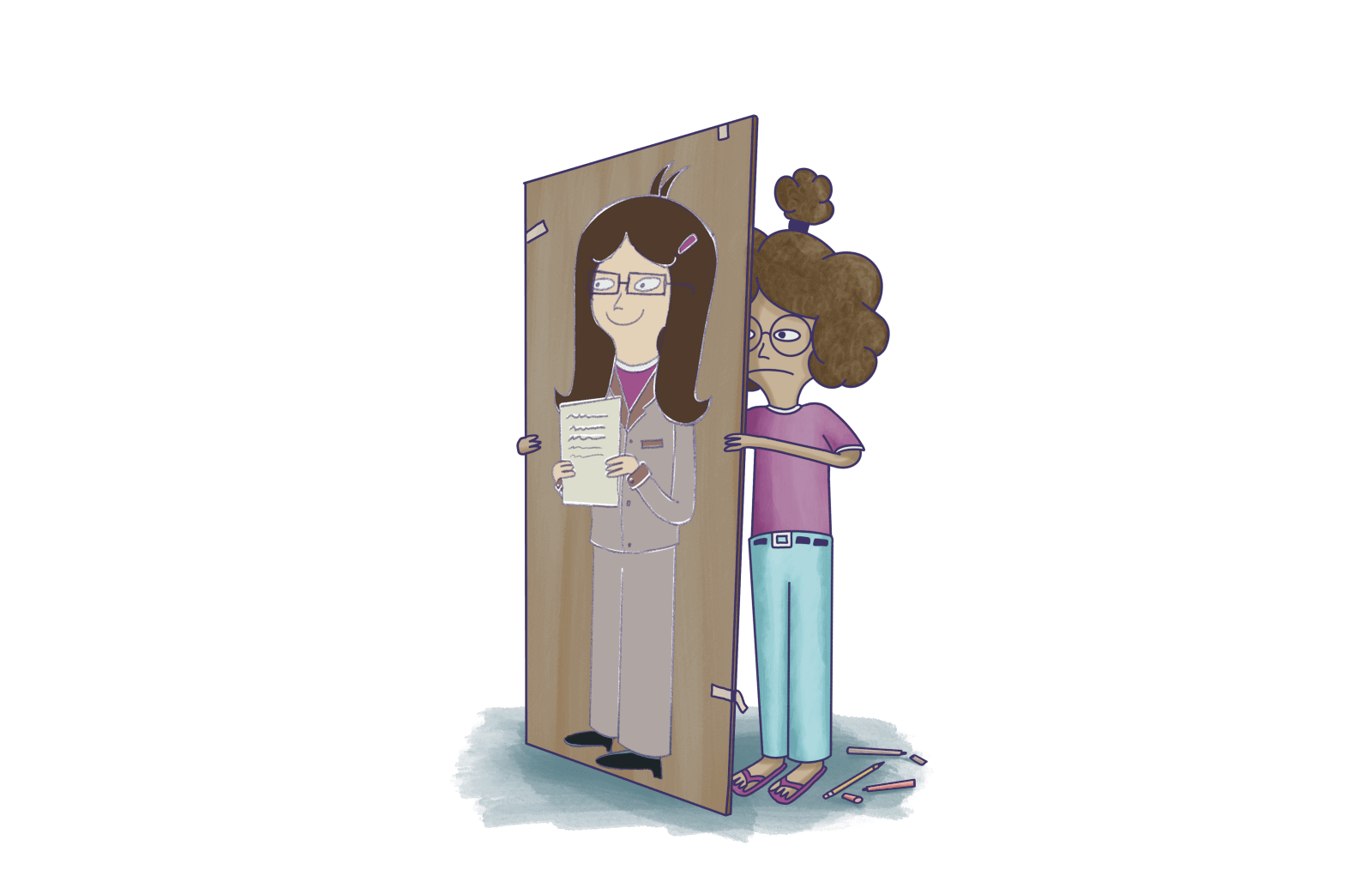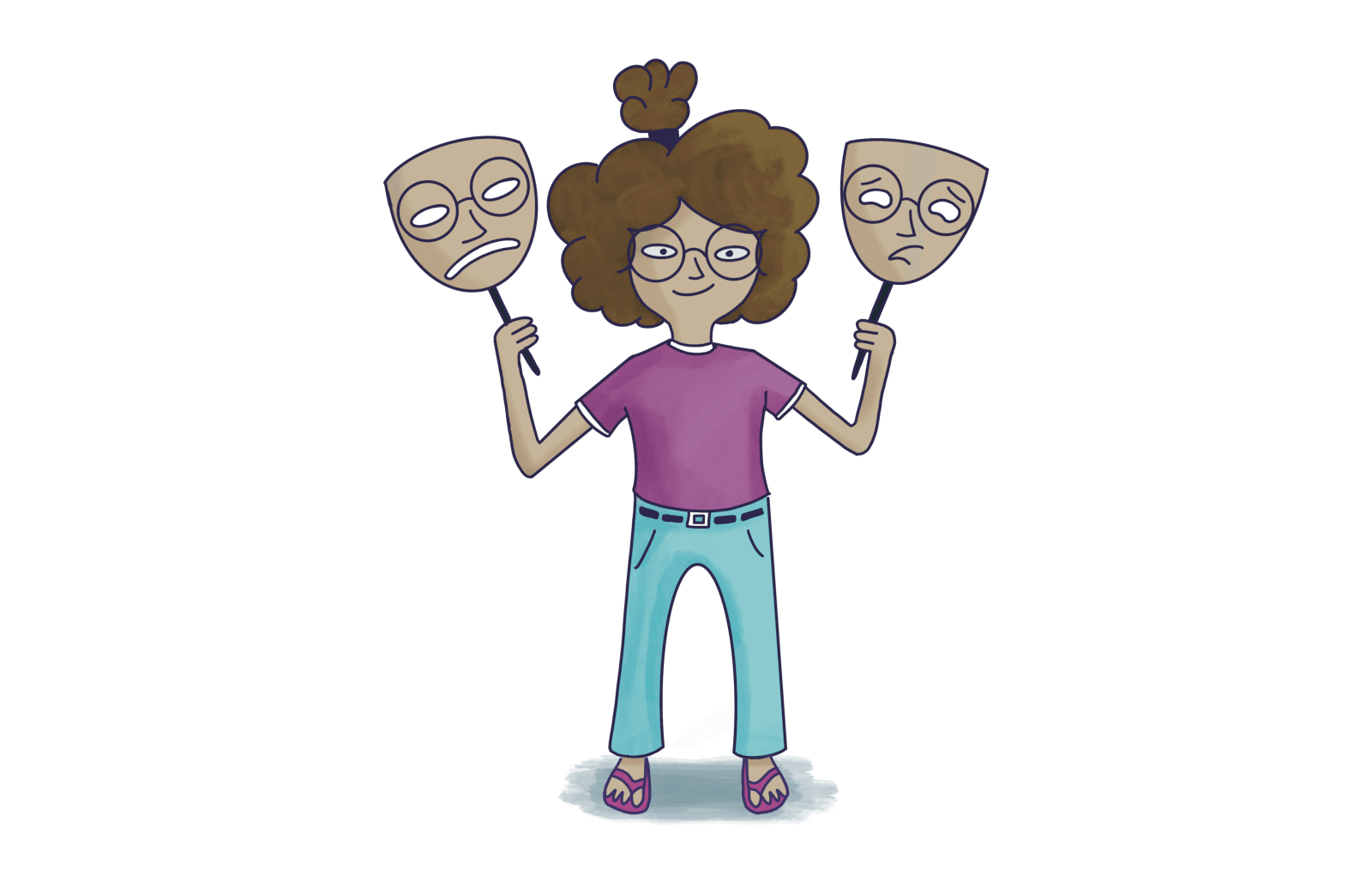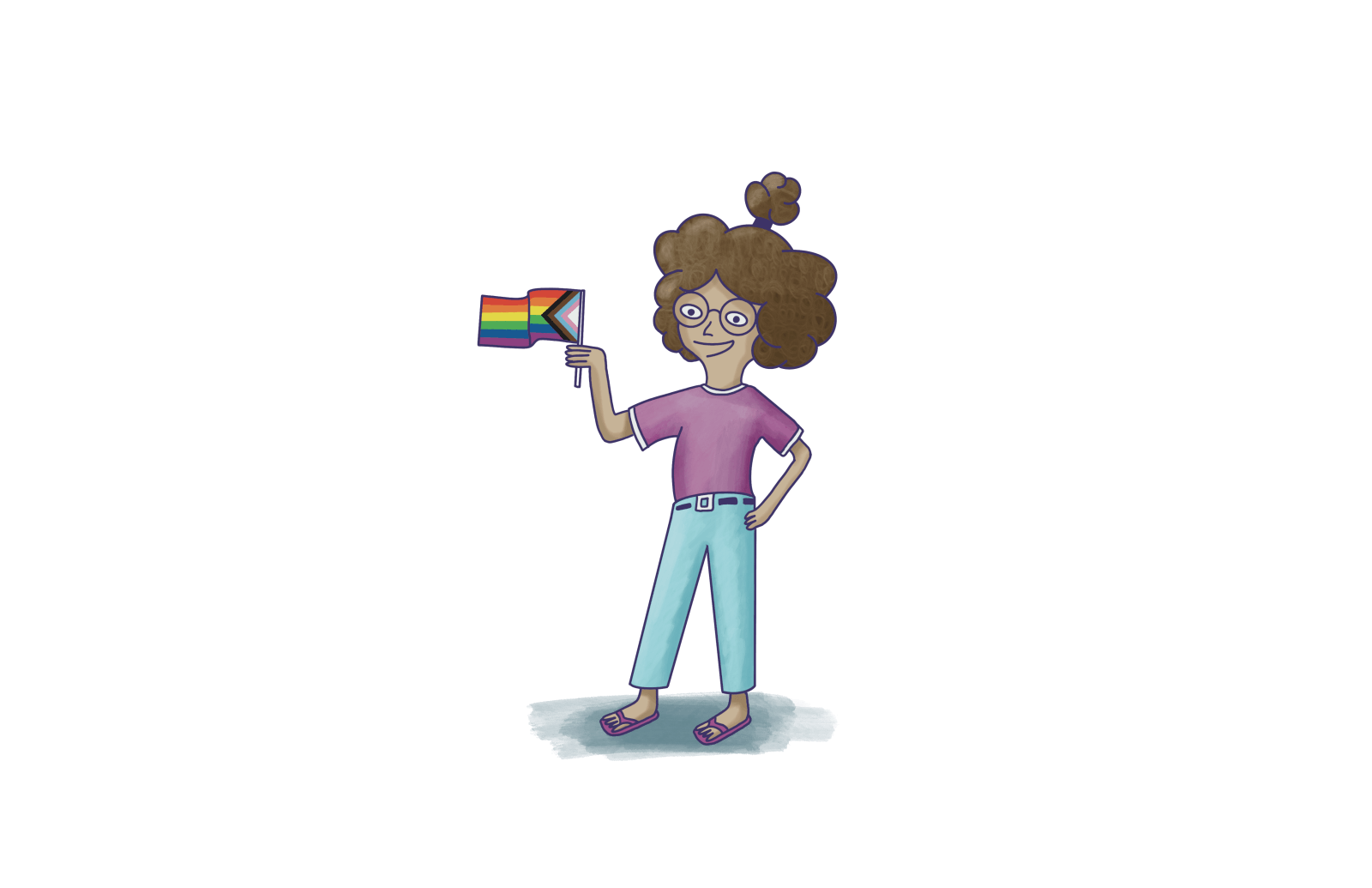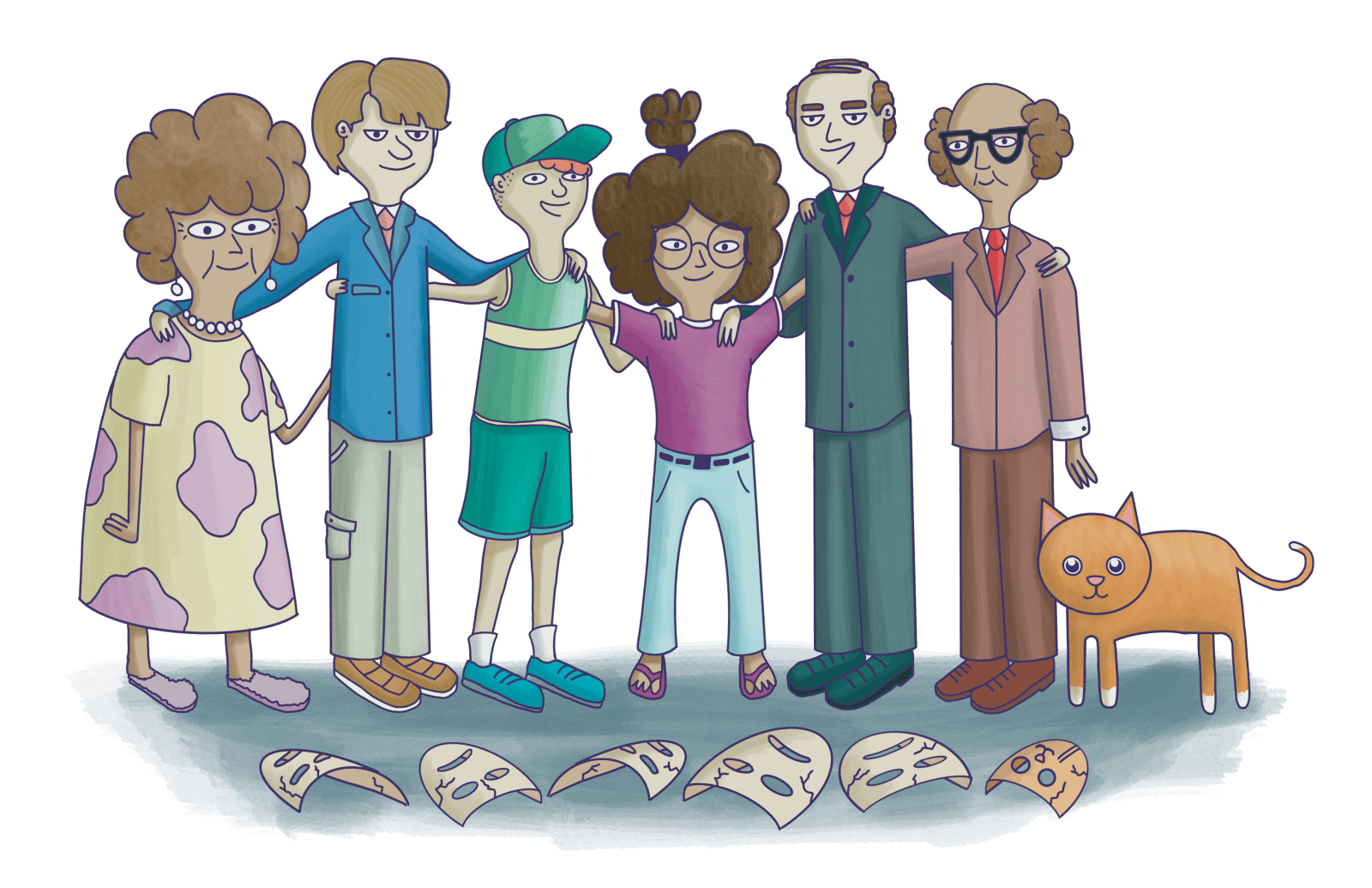Code Switching
May 9, 2023
Everyday, we choose what we want to show or cover up based on our level of comfort and safety. For neurodivergent people, “masking” is a way to imitate in order to accommodate others. There’s other words that get thrown out to describe this behavior, but whether it’s called “code switching” or “covering” or “assimilating” it’s just people trying to navigate a world that’s not always safe or comfortable. To those who feel they have to hide their true selves, it can be exhausting.

What is Code Switching?
Code switching by definition is: “The use of one dialect, register, accent, or language variety over another, depending on cultural context, to project a specific identity.”

Maybe a more pertinent definition for this article comes from Harvard Business Review: “Code Switching is adjusting one’s style of speech, appearance, behavior, and expression in ways that will optimize the comfort of others in exchange for fair treatment, quality service, and employment opportunities.”
There’s been a lot of talk about this lately, so you might be thinking “I don’t know if I agree with all this” but you can let down your guard. This blog is just to show that code switching exists, explain why it can affect performance, and to give you some ideas to encourage people that may feel out of the conversation to join in.
At the Olympics in 2016, Barack Obama went viral for giving a standard handshake to an assistant coach and then immediately giving a full embrace to Kevin Durant, after USA Basketball won the gold medal.
Why did Barack Obama change the way he greeted Kevin Durant from handshake to “man-hug”? It’s obvious that his level of comfort was different with KD. He allowed himself to share a more genuine moment because he felt secure that both parties were okay with it.
This is all normal and not always negative. I speak to my nephew differently than my father. Who’s getting the REAL me? Am I being fake? No. Neither is getting every facet of my personality at once (and honestly, who would want that?). We all navigate the world, trying to adjust for perceived differences. Communicating our thoughts through these differences allows us to understand and empathize with each other. We do this mostly subconsciously, just as members of an orchestra are acutely aware of each other’s tempo, volume, pitch, etc. At the same time, we mute out things that are discordant, things we don’t think will be understood or accepted by the listener.
Why do we do it?
It’s easy to be comfortable when you’re surrounded by your inner circle. Whether you share the same experiences (friends, coworkers) or a shared background (the same hometown, the same university, the same profession, the same ethnicity), some commonalities instill trust.
Contrast that with how it feels to be a “visitor”. You could be in another city, state or country. You have the feeling that no one is looking out for you or rooting for your success. You’re more dependent on people to find your way around. If something bad happens, you can’t be confident you’ll get the benefit of the doubt.
Thanksgiving
For example, you’ve been invited to Thanksgiving Dinner for the first time by a family you don’t know very well. Would you tell them an off-color joke? Would you root against their team during the football game? Of course you wouldn’t. You just try to fit in. You show a vanilla version of yourself. Being a vanilla version of yourself is better than giving strangers the wrong impression.

Similarly, when confronted with a room full of people, we all examine the situation carefully before we decide who we’re going to talk to or what we might say to them. Sometimes it takes another person to make us feel more welcome.
Last year, a few coworkers and I went on a tour of a partner DMO to meet with clients. One of the days we were there, we scheduled a meeting at a yacht club. I entered that room with trepidation since I’d never been within a mile of a yacht club. The closest thing I could imagine was a scene from the movie Caddyshack—rich guys in captain’s caps eating caviar and talking about vacationing in The Hamptons.
As soon as the conference room door was opened, I immediately felt uncomfortable. For some reason, I thought it’d be appropriate to wear a Hawaiian shirt. Of course, when we got there everyone else was in a jacket and tie. Sticking out like a sore thumb, I hid in a corner and was counting the seconds before we could leave. As I waited there, a guy I had never seen before immediately started walking toward me from the opposite side of the room. When he got to me, he extended his hand and said:
“Man, I’m glad to see you here! I thought I was the only one of ‘us’ in here.”
I immediately felt more at ease…
He told me his name was Walter. I found out later that he’s the chief of police in his town. Even though, on the surface, we had very little in common, at that moment, he felt like he had more in common with me than any of the other people in that room.
I thought to myself:
He’s Black, I’m Asian.
He’s Texan, I’m not.
He’s dressed appropriately, I’m not.
He knows everyone there, I know no one.
But, despite these differences, just by seeing each other, we felt a little more like it was okay to be there and to be ourselves. I thought it’s crazy that one of the highest ranking officers in the city felt strongly enough to single me out because, he thought, by being a minority, I was the closest person to him in a room full of people. Either that, or he saw I was stressed out and knew he could help. Either way, it worked!

Code switching at work
You might be able to pass as a simpler version of yourself most of the time, the problem is feeling like you have to be a vanilla version of yourself at work. For most people, to excel at work, it takes everything you have. Trying to perform while maintaining a facade can make this impossible. Code switching at work manifests itself in a lot of different ways and some are hard to recognize.
Here are some examples:
- Women changing their tone or cracking lewd jokes to be part of a “boys club.”
- People of color changing their natural hairstyles to “look more corporate” or comply with white-centered dress codes.
- Foreign language speakers trying to reduce their accent or not feeling comfortable speaking to one another in public.
- Non-binary individuals wearing traditional-gendered clothing in the office.

Personally, when I feel out of place, I find myself:
- Walking around smiling no matter how I feel.
- Being silent when I have STRONG OPINIONS.
- Giving deference when I actually don’t agree (being a “yes person”).
Imposter Syndrome
Code switching promotes the attitude of “I’m just lucky to be here.” In other words, you’re here at someone else’s expense or by some mistake. Instead of being confident you can take the next step or contribute a surprising idea or expose a flaw in an existing process, you stay silent.
Covering
“Covering” is closely related to code switching. Covering is hiding some aspect of yourself because you’re afraid it will affect how others feel about you. Deloitte conducted a survey of over 3000 diverse employees.
They found:

- 61% of participants admit to “covering” a part of who they are at the workplace.
- (79% of black people, 67% of women of color, 66% of women, 63% of LatinX) regularly hide some aspect of their identity at work.
- 53% believe it was EXPECTED BY LEADERSHIP to cover up their identity.
Jane Elliot
As a schoolteacher, Jane Elliott became known for her “Blue eyes vs. Brown eyes” exercise, which she first conducted with her third-grade class on April 5, 1968 (the day after the assassination of Martin Luther King Jr.). She did this to show how unfair and arbitrary racial prejudice is.
When explaining the benefits of showing our whole selves, she said, “We don’t need a melting pot…we need a salad bowl. In a salad bowl you put in different things. You want them to maintain their identity. You appreciate the differences.”

A lot of people ask, “Why can’t everyone just learn to be “professional?”. We are taught that we should strive to be a society or a workplace where everyone is the same. I would counter that by asking, “What do we lose when we tell people if you can’t be the same as everyone else you aren’t good enough?”.
Of course, this doesn’t mean there are NO rules to communicating at work. Obviously, there are things that you might be comfortable saying to your closest friends that aren’t suitable for work. But a good idea is a good idea no matter how it’s expressed. We’d have more participation if we prioritize IDEAS over differences in style or vocabulary.
What can you do to encourage people to contribute?
Think about ways to make EVERYONE feel respected and safe. This will be different in different situations, but it means to:
- Aim for inclusion: Listen for signals that someone is uncomfortable speaking up. Sometimes you can sense frustration if you are aware of the problem. Sometimes the person might WANT advice on how to speak at work (or speaking up in general), other times you might have to reach out to them (ask them their opinion until they feel it’s ok). Give people “room” to contribute (don’t talk over them) and ENCOURAGE people to speak up.
- Be an example: Exemplify vulnerability and participation. Show that asking questions and being vocal is a strength. Feel free to speak in a way that’s natural to YOU. Be conscious that “business speak” is dynamic and doesn’t have to be the same for everyone.
- Reach out: Create safe places where we openly talk about tough topics for underrepresented people. This is something we’re doing at Madden Media with our Employee Resource Groups.

When we share more of ourselves, we benefit from everyone’s unique experiences. Here are some details about me:
- I’m the youngest of 7 kids.
- I was in choir all four years of high school.
- I love gardening, and The Golden Girls.
- Now that I’m 50, my favorite exercise is riding my bike around town.
Hearing details about someone’s life can surprise you, but it shouldn’t. Everyone’s life is a tangle of beliefs, burdens, trauma, and dreams that came about from a hundred different experiences, influences, and circumstances.

So, imagine how things would change if everyone felt secure to contribute from their own experiences, fighting for their own ideas, knowing they are respected for their unique contributions, knowing their opinions are taken seriously, being encouraged to admit when they need help.
If more people felt free to contribute EVERY ASPECT of their personal experience, not only would that benefit the company, EVERYONE would feel a part of that success.



